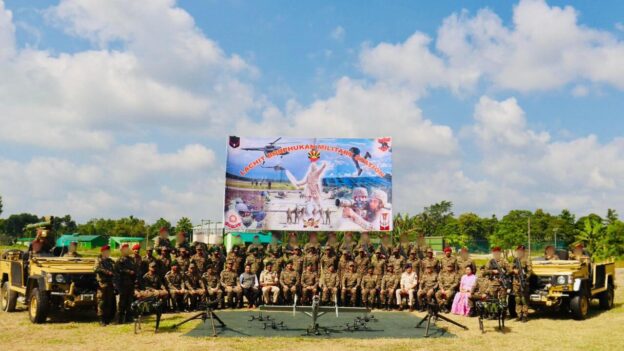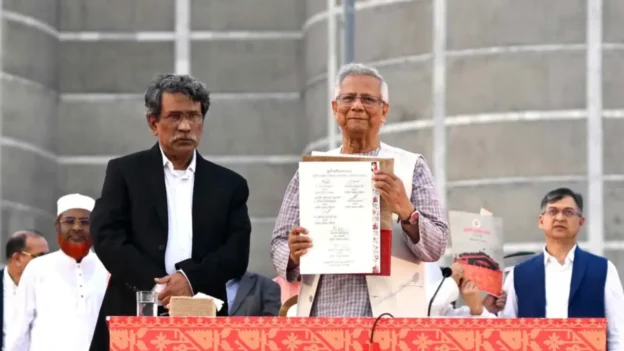There is a growing buzz within global defense circles regarding Pakistan’s sudden push to procure advanced Chinese weaponry—ranging from the fifth-generation J-35 stealth aircraft and PL-17 long-range air-to-air missiles to the HQ-19 ballistic missile defense system—at what is being described, even in official murmurs, as a near 50% discount. That figure alone should make analysts pause. Pakistan, heavily indebted and militarily bruised, seems to be seeking not just equipment, but a narrative fix. And it’s China that is supplying both.
But it is important to read between the headlines. Pakistan’s urgency, particularly after the May 2025 India–Pakistan confrontation—referred to unofficially as Operation Sindoor—reveals deep operational and doctrinal fissures within its armed forces. It also calls into question the efficacy of the Chinese systems it had touted with much fanfare until now: the J-10C multirole fighter, the HQ-9B air defense umbrella, and the much-discussed PL-15 missile family.
Operation Sindoor: A quiet rout?
While much of what happened during Operation Sindoor remains under wraps, the losses speak louder than press releases. Pakistan is reported to have lost 8 F-16s, 4 JF-17s, and multiple J-10Cs. These weren’t skirmishes—they were systemic failures. Particularly telling was the downing of a Saab 2000 AEW&C aircraft by India’s S-400 Triumf system—reportedly from a staggering 315 km range. This incident wasn’t just a tactical setback—it was symbolic. The heart of Pakistan’s air surveillance net, dismantled at stand-off range.
Soon after, Pakistan initiated talks with China for additional AWACs and airborne radar systems—despite already having the Saab and the Chinese ZDK-03 in its inventory. If these systems had functioned as expected, what explains this desperate sprint to replenish? The answer, arguably, lies in operational exposure. Pakistan’s situational awareness was compromised, its integrated air defense fractured, and its air command chain partially blinded.
Adding to this narrative of dysfunction was the failure of several Chinese-origin systems. A PL-15 missiles with a claimed 300 km range was found undetonated in Hoshiarpur—its seeker likely jammed or its targeting logic corrupted. In another incident, an Indian Harop kamikaze drone reportedly bypassed the HQ-9B defenses in Lahore and struck a radar facility. The irony could not be more bitter—platforms marketed as “strategic deterrents” were unable to prevent tactical penetrations.
The “Baniya Paradox” and China’s strategic giveaway
Pakistan’s desire to procure the J-35 stealth fighter, at an alleged 50% markdown, has puzzled even Beijing-watchers. On the surface, it’s a generous gesture from a “trusted all-weather friend.” But that is only half the story.
This is what can be described as the “Baniya Paradox.” Why would a shopkeeper (China) offer a top-of-the-line product to a customer (Pakistan) who hasn’t yet paid for the previous one (CPEC, JF-17 Block III, etc.)—unless the last delivery was defective or underwhelming? The answer may lie in image management. The J-10C, once hailed by both Beijing and Rawalpindi as a Rafale rival, was shown to be less than dependable in combat. Even Chinese defense forums—normally state-curated and curated—hinted at radar lock issues and low sortie sustainability.
The J-35, then, serves multiple purposes: it silences Pakistan’s internal disquiet, distracts from prior failures, and offers China a proxy testing ground for a fighter still not inducted into its own frontline PLAAF squadrons. The ‘discount’ is a bribe in strategic currency: loyalty, silence, and battlefield feedback.
India’s steady hand and indigenous confidence
In stark contrast, India did not rush to arms deals post-Operation Sindoor. The post-conflict response was telling: no immediate buys, no panic procurements, just confidence in systems already operational.
The Rafales performed precision strikes in hostile airspace. The Su-30 MKIs, supported by IAF’s Netra AEW&C, enforced a wide air superiority bubble. India’s indigenous Akash NG system intercepted two stand-off missiles launched toward Amritsar sector, while Rudram-1 anti-radiation missiles reportedly neutralized radar sites near Bahawalpur.
But it was the c that delivered the most compelling statement. Engaging a Pakistani JF-17—possibly even a J-10C—in an air duel and emerging victorious, the Tejas shrugged off years of bureaucratic mockery. It wasn’t the fastest jet in the sky, nor the most advertised. But it worked. And it worked when it mattered. One senior IAF officer, speaking off-record, described it as “A Maruti among Lamborghinis—doesn’t break down, doesn’t boast, just does the job.”
And that may be the real difference. India’s defense programs—though often criticized for delays—have focused on layered capability and component-level mastery. The BrahMos, with its pinpoint strikes, the Akash, with its robust radar integration, and now Tejas, with its combat-proven agility—all reflect an engineering culture of incremental excellence rather than one of marketing gloss.
Lessons from the arms bazaar: What this reveals
What Pakistan is doing now is not modernization; it is salvage. It is trying to rebuild a broken deterrent structure with the very same vendor whose previous offerings failed to deliver. China, for its part, is not being benevolent—it is being opportunistic. By giving Pakistan the J-35 at half price, it is using its ally both as a testing laboratory and as a billboard. After all, a fighter tested in real-world conditions sells better abroad.
But the more worrying trend is the erosion of military trust. When systems like the HQ-9B fail to detect or intercept incoming threats, or when PL-series missiles fail to hit—or even detonate—trust in the technology erodes. And when a country’s response is to double down on the same supplier, it reflects geopolitical compulsion, not strategic clarity.
India, meanwhile, is not without its problems—but its approach seems more future-ready. The AMCA (Advanced Medium Combat Aircraft) is in advanced design stages, the Tejas Mk2 promises a next-gen leap, and joint ventures with France and Israel continue to strengthen radar, missile, and drone capabilities. There is no frantic shopping. Just quiet, layered expansion.
Beyond the headlines
In the end, Operation Sindoor revealed more than just losses or victories—it revealed attitudes. Pakistan’s posture is reactive, image-conscious, and increasingly dependent on a single supplier with mixed results. India’s is measured, localised, and grounded in systems that integrate rather than dazzle.
If Chinese systems continue to fail on the field but sell well in brochures, perhaps the larger lesson is this: reliability—not rhetoric—is what shapes military history.
And in that race, India seems to be quietly moving ahead, one indigenously tightened bolt at a time.
Disclaimer: The views and opinions expressed in the story do not represent the stand of this publication.







